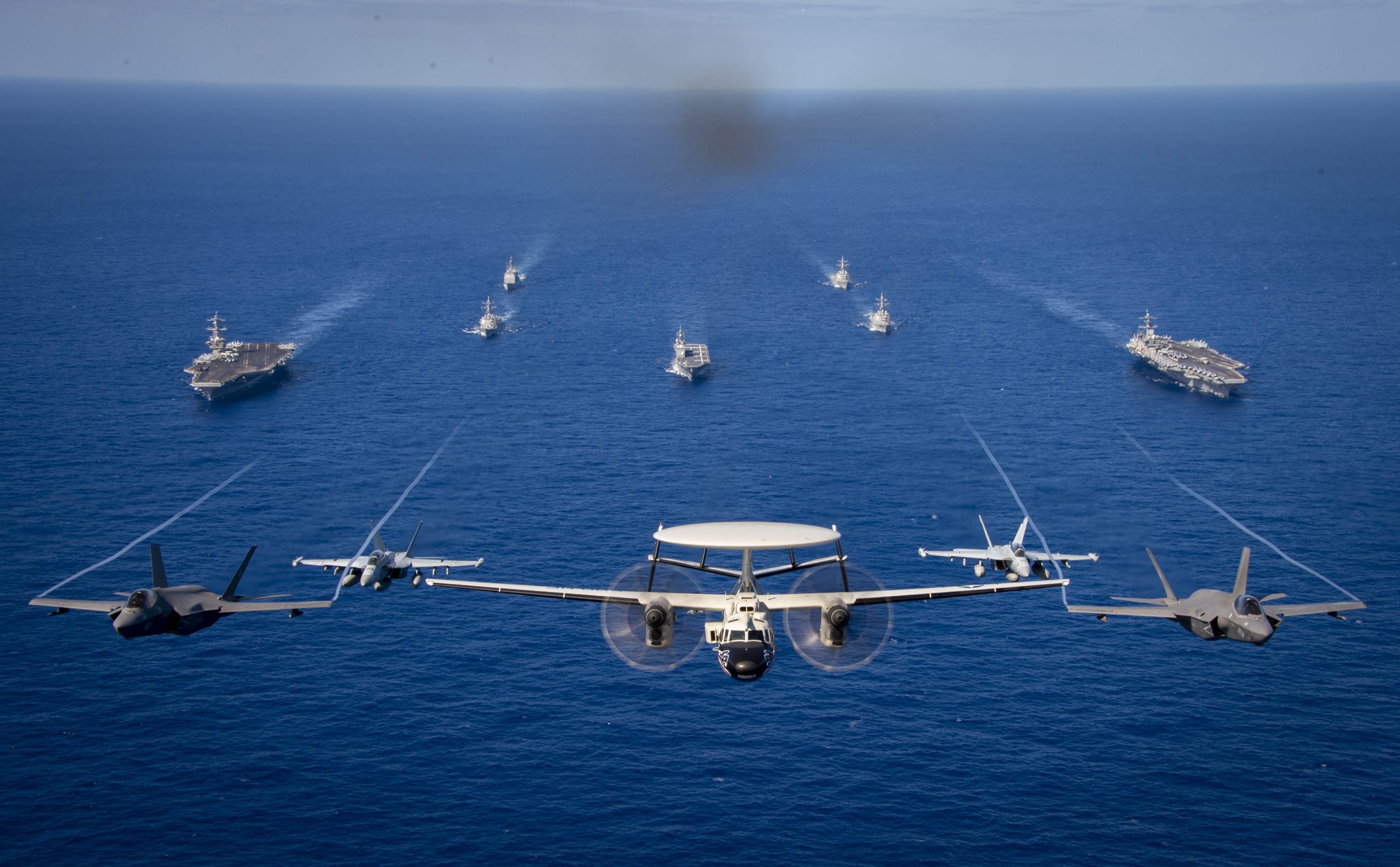Amid rising global tensions, the United States military has taken a decisive step to strengthen its strategic positioning in the western Pacific by deploying three aircraft carriers.
This move, aimed at deterring potential threats from China and North Korea, is unfolding against growing concerns about the specter of broader conflicts in the Middle East.
The USS Carl Vinson is carrying out a training exercise in the Philippine Sea alongside the USS Theodore Roosevelt and the Japanese helicopter destroyer JS Ise.
The Japan Maritime Self-Defense Force confirmed the participation of nine additional vessels in this coordinated display of naval strength. The USS Ronald Reagan, stationed in Yokosuka, Japan, remains at its home port, resulting in three out of the eleven US carriers strategically positioned in the Indo-Pacific.
Previously, in 2020, the US Navy deployed its three aircraft carriers, namely the USS Theodore Roosevelt, USS Nimitz, and USS Ronald Reagan, to the Pacific Ocean, sparking a strong reaction from China’s state-sponsored media, which asserted that Beijing would stand firm in safeguarding its interests in the region.
Furthermore, the state media issued a warning note highlighting China’s possession of anti-ship ballistic missiles, such as the DF-21D and DF-26, designated as potential threats to aircraft carriers.
Nevertheless, the latest presence of three aircraft carriers came when the United States’ treaty ally, the Philippines, became embroiled in territorial disputes with Beijing in the South China Sea.
Rear Adm. Carlos Sardiello, commander of the Carl Vinson strike group, affirmed the readiness of the carrier strike group to execute a comprehensive range of operations. He emphasized the strategic importance of training opportunities in the Philippine Sea, where large, capable, and agile platforms can efficiently aggregate.

